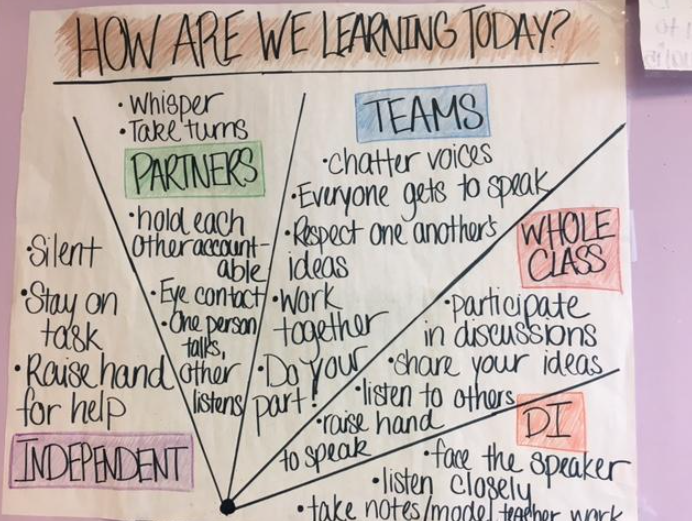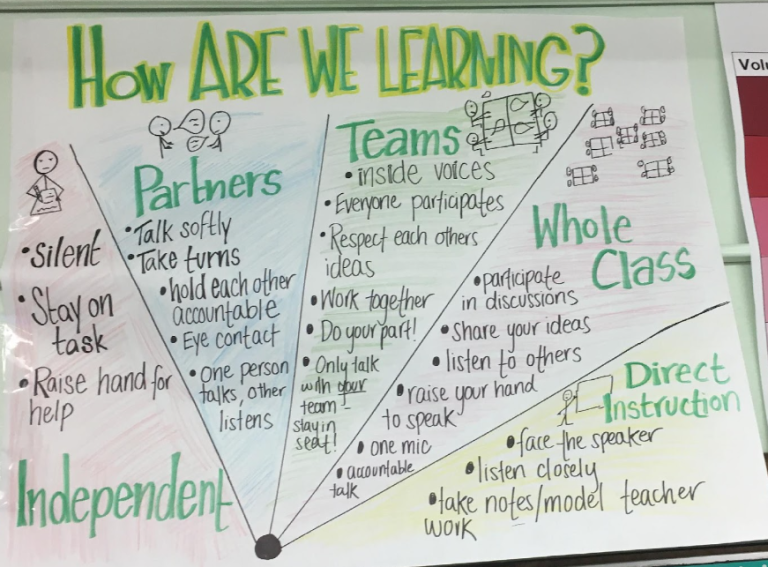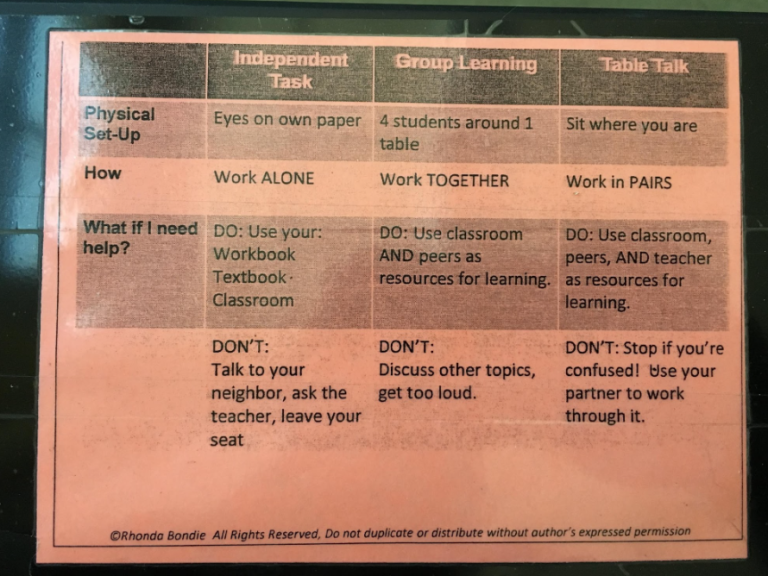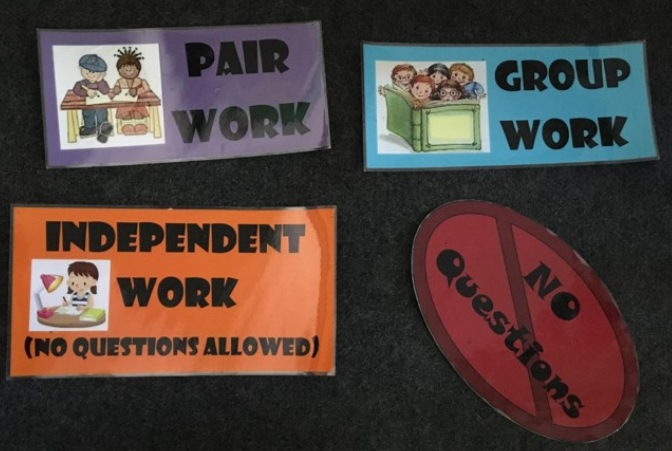Structures determine how learning will take place during a task. There are at least four possible structures for learning tasks – explicit instruction, free discussion, individual learning, and group learning. Each of the task structures facilitates different levels of student autonomy and engagement. Additional structures can be created and defined by teachers and students.

All routines use one or more structures. Individual learning routines usually only use one structure – independent learning. But as a general rule, in order to create durable learning routines and to increase student agency in their learning process, each part of every lesson needs to include more than one structure. Routines have a built in sequence of structures that is planned in advance with anticipation of student learning needs. But as you grow more comfortable with agile teaching you can begin to alternate the structure of a routines on the spot as you notice new needs and challenges.
The different structures affect not just how learning takes place but also the classroom dynamics, layout, and noise level. Therefore, the expectations for what should happen during a structure should be explicitly taught so that transitions between structures are effective and efficient. Once taught structures can be sequenced to create a routine that is cognitively, motivationally, and culturally supportive for student learning.
Scroll through the gallery below to see how other teachers post structure directions in their classrooms.


Click on any of the documents below to view them in a new tab. Feel free to download or print them so you could add them to your lesson plans.






